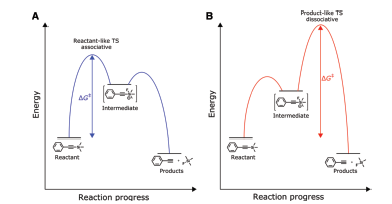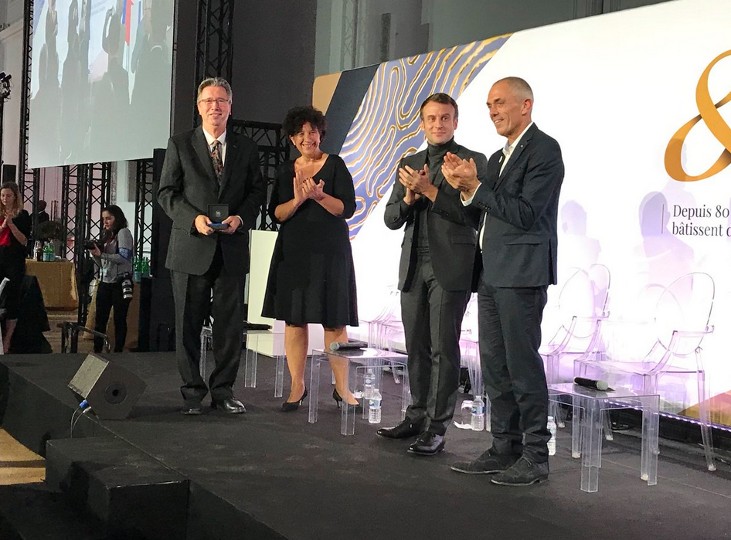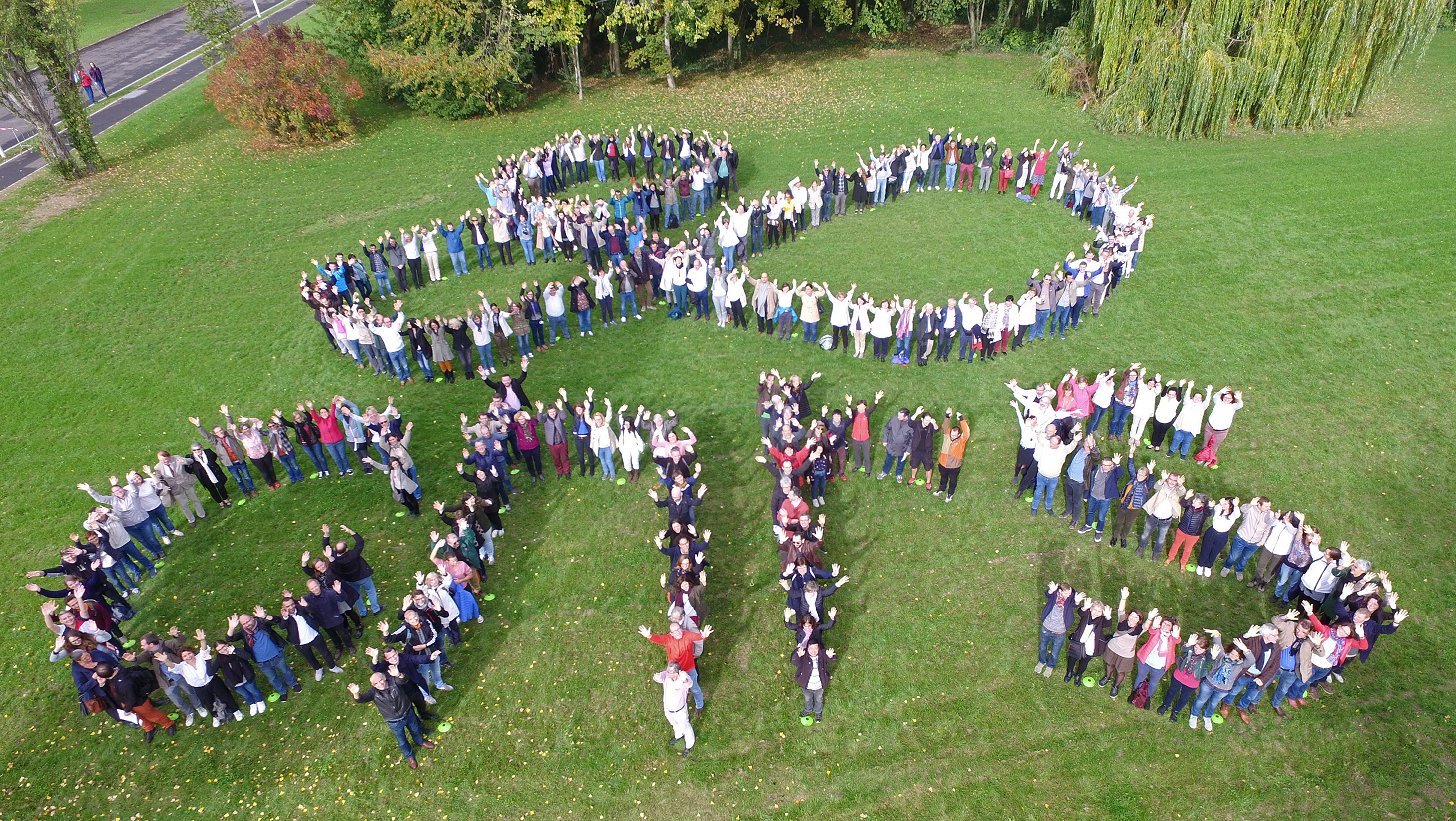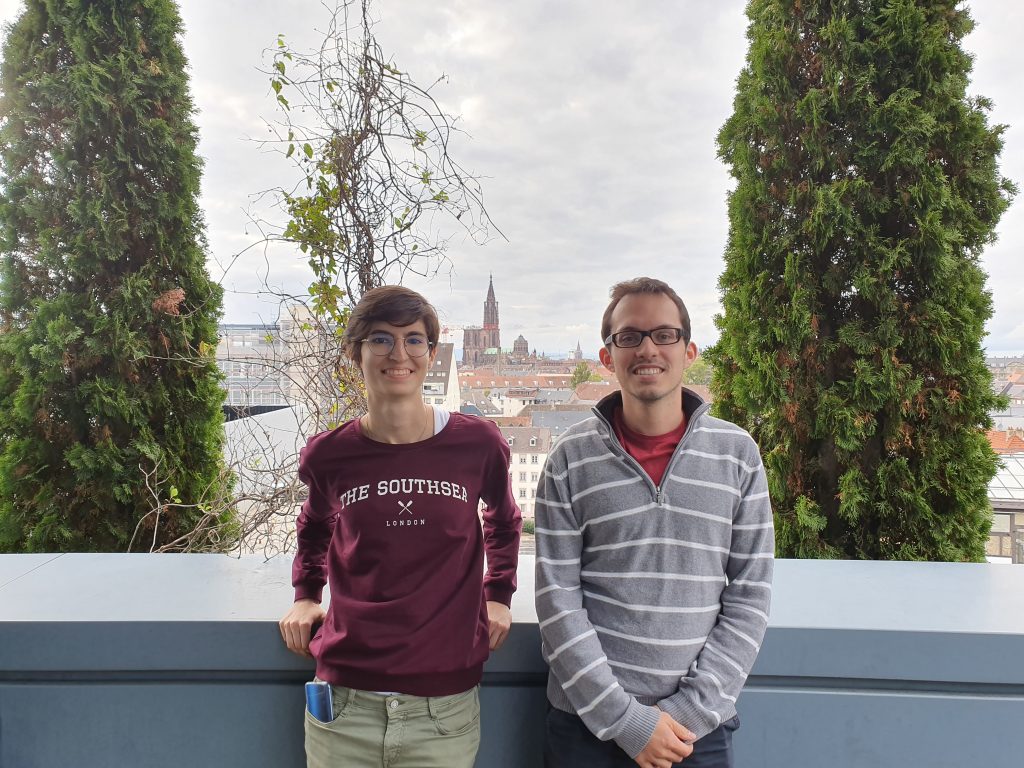Daichi Okada, who already spent two months in our lab in the autumn of 2017, is back for another two months stay. He is currently working in Kyushu University, in the group of Pr Adachi where his research topics is laser applications of self-assembled organic micro-structures. If you wish to meet him, he is staying in room 105. Welcome back to him !
Good bye Yantao !
Our dear colleague and friend Yantao Pang, who was in the lab for one year, left yesterday because of the end of its stay, to go back in Jinan, China. It was a pleasure to have him with us and we wish him all the best for the future !
Source : Minghao Li
Thermodynamics of VSC
A new publication appeared last week in Nanophotonics, where we study the evolution of some thermodynamic parameters of a chemical reaction (desilylation of PTA) happening in an optical cavity, under vibrational strong coupling (VSC). In this regime, the enthalpy and entropy of activation, determined from temperature-dependent kinetics studies, vary nonlinearly with the coupling strength whereas, when the same parameters are characterized out of cavity, they are pretty constant. It confirms that changes in the kinetics observed under VSC are only related to the enhanced coupling strength. Those results give more insight into the role of collective strong coupling on the transition state that leads to modified dynamics and branching ratios. See our publications page !
Gold medal 2019
The official ceremony for the CNRS gold medal took place in Paris, at Le Palais de la Découverte, on Tuesday 26 of November, on the occasion of the celebration of CNRS 80th birthday. The president Emmanuel Macron himself presented Thomas Ebbesen with the medal and the minister of research, Frédérique Vidal, did a nice talk about his career. The video of the ceremony can be watched either on the social medias of the CNRS or on the Elysée website (Thomas’ speech around 1H32mn). There is also an article on the CNRS website with videos that were shooted at ISIS a few weeks ago, and here is a link to one more video shooted by the local TV France 3 Grand Est.
Congratulations again !
Source : Eloïse Devaux & CNRS
Happy eighties !
Inauguration of ISIS-2
Yesterday, October 10, the extension of ISIS, called ISIS-2, has been officially inaugurated. It will welcome 2 senior labs, 3 juniors labs and industrial antennas. Moreover, it will also host a datacenter of the University and the two foundations, Fondation Université de Strasbourg and Fondation pour la Recherche en Chimie
A bottle alsacian wine has been sent and broken against the front of the new building, like for the launching of a new boat on the sea, see the little video taken by Artur Cieselski from Paolo Samori’s group.
You can find an article (in french) on the University website and more pictures on the social networks of the University. Here is also a video (in french) taken by the local TV.
Source : Isis-inauguration_DP_VF
Seminar Kevin Kubarych
Kevin Kubarych, from the University of Michigan, is visiting our lab today and tomorrow with two of his collaborators. He will give a seminar entitled
Exploring Vibrational Polariton Dynamics with Ultrafast Two-Dimensional Infrared Spectroscopy
this afternoon, October 8, at 2.30pm in the meeting room of ISIS.
New members in the lab
Since October 1st, three new people started a contract in the lab. Women first, we will start with Bianca Patrahau, who already came for a summer training last year. After doing two more trainings in Italy and in Switzerland, she is now starting a phD with us. Then Rémi Goerlich, who did his master 2 training in the lab, in collaboration with Dyno group at IPCMS, is also starting a phD now. To finish, we welcome a new postdoctoral researcher, Gian-Lorenzo Paravicini-Bagliani. He is coming from the Physics Department of ETH Zürich where he worked as a postdoc till July 2019, after defending his phD in the end of 2018 on the magneto-transport in engineered vacuum fields.
Bianca and Gian Lorenzo on the 6th floor terrace










